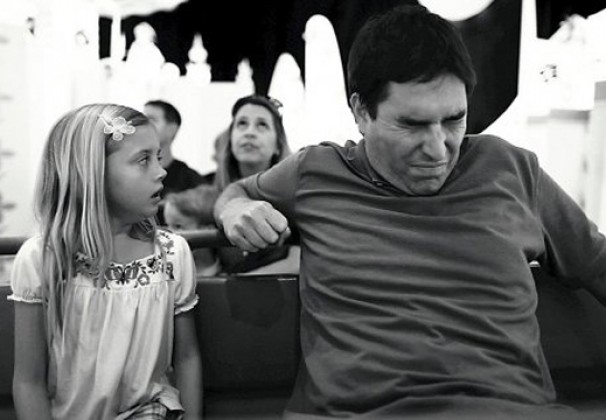
One should always be wary when a film becomes more well-known for the notoriety of its production rather than its content. Randy Moore’s “Escape From Tomorrow” falls into that trap — it’s a film that has a lot of buzz surrounding it for all the wrong reasons.
Most of that buzz exists because Moore daringly filmed in Disney World without Disney’s permission. Through guerrilla filmmaking techniques, Moore went unnoticed in the theme park to film a low-budget psychological thriller. The fact that Moore was able to accomplish this feat is admirable, but for all the work that went into filming in Disney World, it feels like the opportunity was wasted on a story that is quickly muddled with surrealistic narrative elements.
The movie focuses on Jim White and his family on their last day of vacation at Disney World, and it starts straight away by highlighting the presumed psychological effects of “the happiest place on Earth.” It seems like an interesting concept, and it presents an intriguing contrast with the cheeriness of Disney, when Jim’s boss calls and fires him. If the movie was kept as simple as that, it could’ve been a stark look at consumer culture and a family’s relationship with consumerism.
Instead, the movie descends into a trippy psychological journey that veers dangerously close to being self-indulgent. The first few instances of hallucinations on the “It’s a Small World” ride are fun, but the more they occur, the more stale they grow.
While there are some interesting characterizations in “Escape,” the film never fully explores them, instead opting to give the audience a hallucinatory experience that feels gratuitously esoteric. The failing marriage of the Whites, infidelity and mid-life crises are among the many topics put on the backburner for the sake of experimental filmmaking.
Even the decision to have the film in black-and-white feels manipulative, as if the choice not to colorize allows the film to transcend the typical movie-going experience. While the black-and-white filter allows for some beautiful shots, especially those done using low-key lighting, one would think the subject matter would lend itself better to color film, where the director could show off the nauseating effects of the overly color-saturated theme park.
While the film is a fun experience, most of the fun comes from marveling at how Moore was able to film much of “Escape” on Disney property without their knowledge.
There is a lot of potential with this story idea, but it never dives deeper than a shallow satire. If “Escape from Tomorrow” spent more time fleshing out its strongest aspects, it could have been a darkly thrilling look at American consumer culture. Instead, it falls flat with unnecessary plot elements and excessive hallucinatory special effects.
A version of this article appeared in the Wednesday, Oct. 9 print edition. Chris Saccaro is a staff writer. Email him at [email protected].
























































































































































